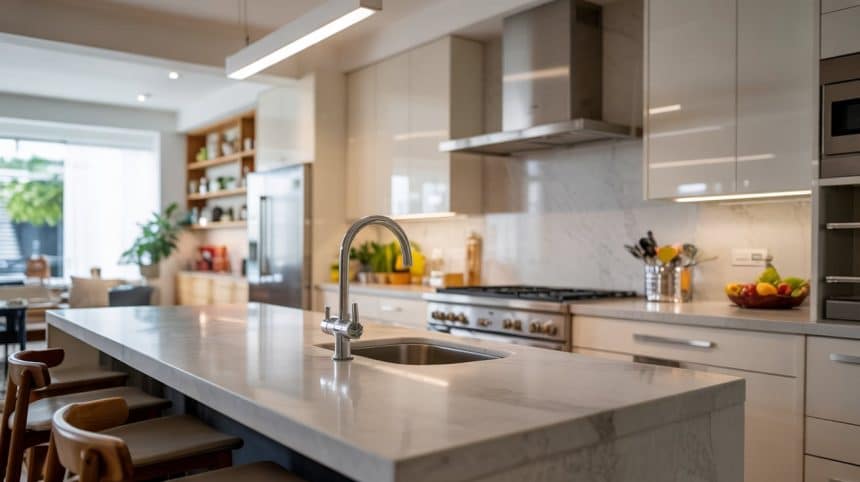Seeking sleek countertop options that won’t break the bank while maintaining functionality?
I’ve found that eased-edge countertops deserve far more attention than they receive. While everyone raves about fancy waterfall edges and ornate profiles, the simple beauty of eased edges goes overlooked.
You might think a basic edge means a boring kitchen, but that couldn’t be further from the truth. The clean lines of eased edges create a modern aesthetic that complements virtually any design style.
What if you could have countertops that are easier to clean, more durable, and gentler on your arms when leaning against them? Eased edges deliver all these benefits while maintaining a timeless look.
Read on to learn why the understated grace of eased-edge countertops might be the perfect solution for your kitchen or bathroom renovation.
What Is an Eased Edge?
- An eased edge is simply a standard square edge with its sharp corners slightly rounded or softened. Imagine taking a perfectly sharp 90-degree edge and gently buffing away the harshness, creating a smooth, eased edge in a nutshell.
- It’s the subtlest of all countertop edge profiles, creating a clean, minimalist look while eliminating the potential discomfort of sharp corners.
- The beauty of an eased edge lies in its understated design. It maintains the crisp, straight lines that modern kitchens love, but with just enough softening to prevent the edge from catching on clothing or causing bruises when you bump against it. This minor modification makes a major difference in everyday comfort.
- Unlike elaborate edge profiles that demand attention, an eased edge conveys sophistication. It’s like the perfect pair of jeans, not flashy, but flattering and functional. The slight rounding also makes these edges more resistant to chipping than perfectly square alternatives, giving you practical durability alongside clean, pleasing.
Types of Eased Edges Countertop
Now let’s dip into the subtle world of eased edge variations, where small differences in rounding can dramatically impact both the look and feel of your countertop design.
1. Full Eased Edge
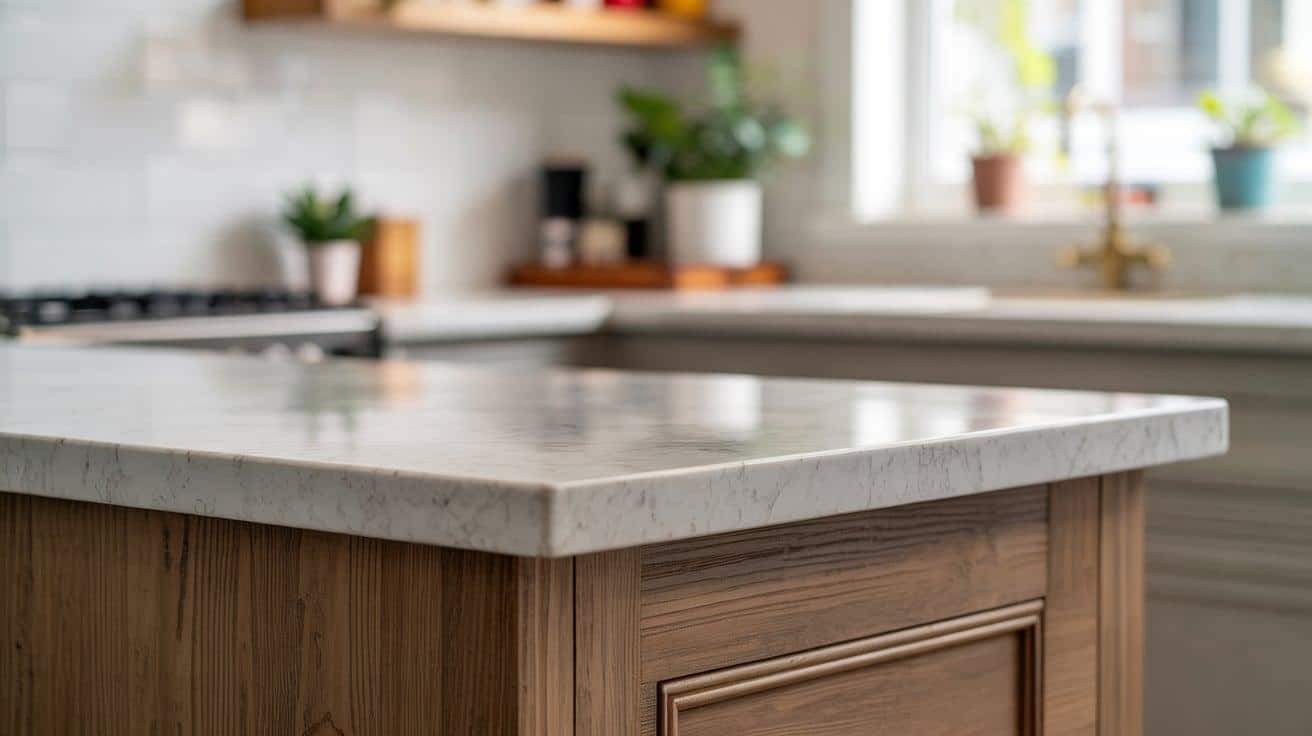
Think of this as the “all-around gentle” option. The entire edge is smoothed into a subtle curve that flows from top to bottom. It’s like taking sandpaper to every part of a sharp corner until nothing can poke or catch on you. This creates a consistent, soft feel wherever you touch the countertop edge.
2. Half Eased Edge
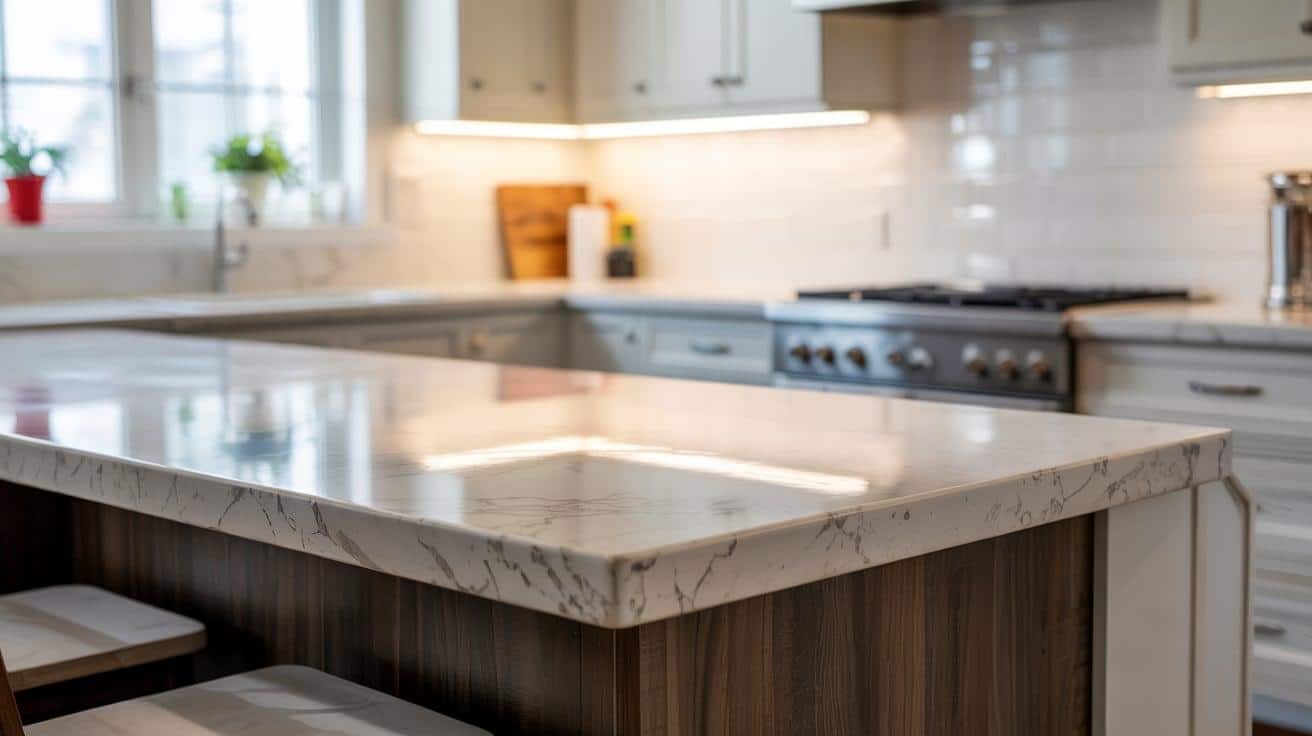
This is the “top-only” approach. Only the upper edge gets the smoothing treatment, while the bottom stays crisp and square. It’s perfect when you want that gentle feel under your arms but still prefer the clean, geometric look of a straight edge when viewing the counter from the front.
3. Double Eased Edge
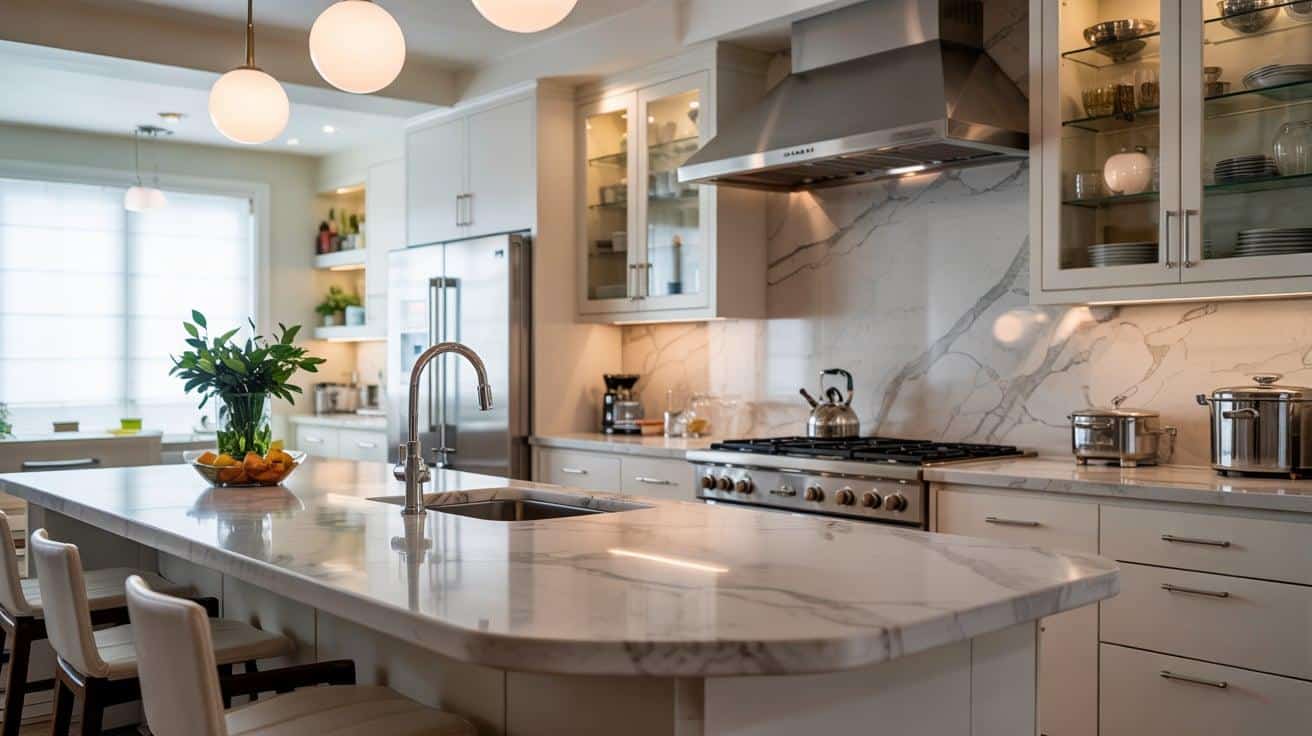
Both the top and bottom edges get rounded here, creating a more noticeable softening effect. It’s like wearing down both sides of a sharp corner. This option feels extra comfortable and looks slightly more finished than a single eased edge.
4. Micro Eased Edge
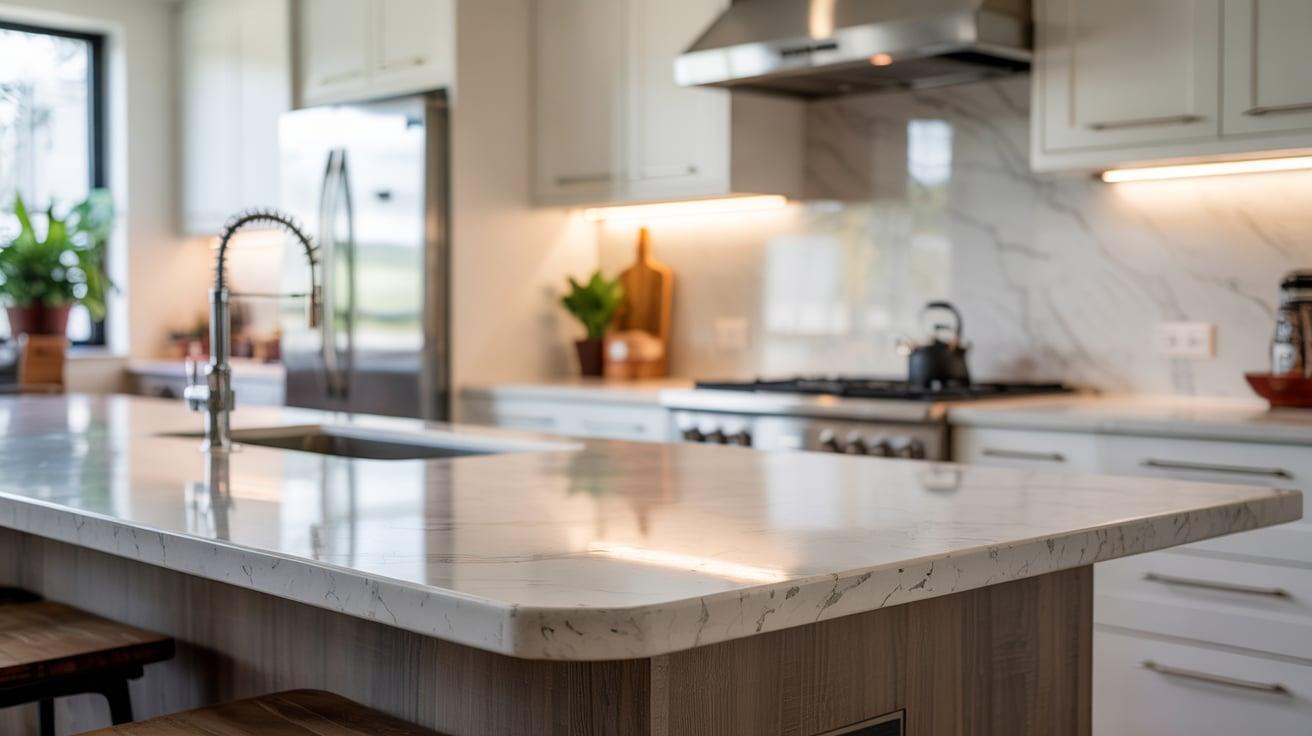
This is the “barely-there” treatment. Just enough sharpness is removed to prevent cuts and snags, but the edge still appears almost perfectly square to the casual observer. It’s ideal for ultra-modern designs that require geometric precision with a touch of safety.
5. Quarter Eased Edge
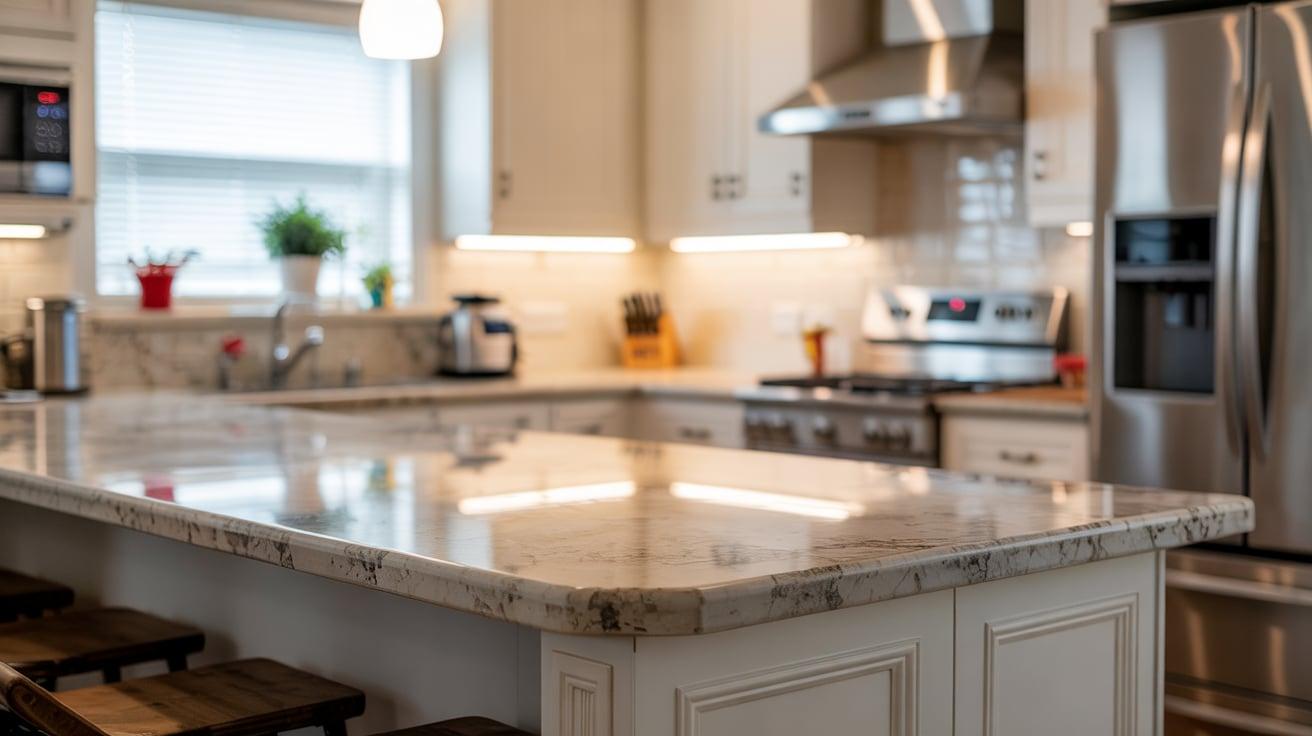
A happy medium that removes about 25% of the square corner: it’s more noticeable than a micro-eased edge but still maintains a primarily straight appearance. This option balances visual crispness with practical comfort for everyday leaning and touching.
6. Gradual Eased Edge
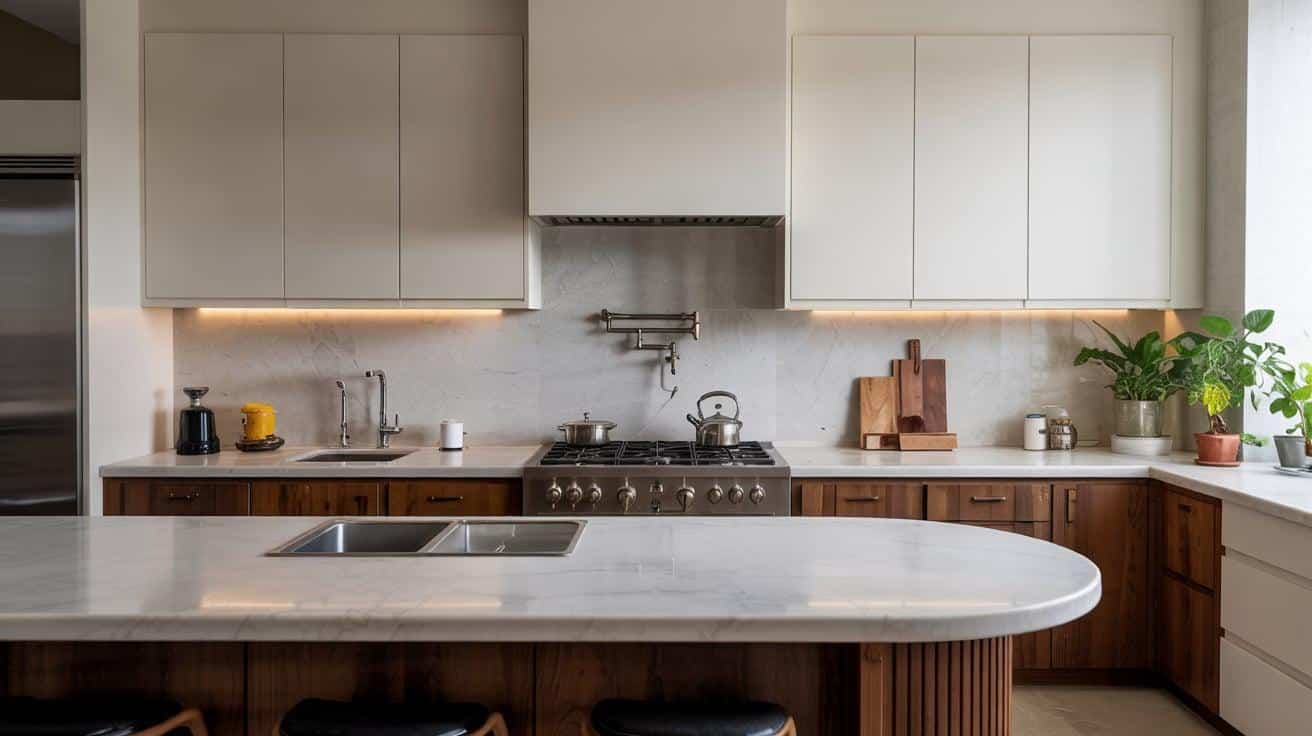
This variation features a rounding that starts minimal at the top and gradually increases toward the bottom, or vice versa. It creates a subtle, flowing feel that directs water and spills away from the cabinet faces while maintaining the clean lines of a contemporary design.
Other Names for Eased Edges
If you’ve been shopping for countertops, you may have heard these edges referred to by different names and wondered if you’re looking at the same thing. Don’t worry – the industry isn’t trying to confuse you (well, not intentionally).
- A “softened square“ edge is exactly what it sounds like: a square edge that’s been gently softened. Fabricators might refer to it as this when they want to emphasize that the edge maintains its boxy shape while eliminating sharpness.
- You might also hear “mollified square“ from more technically minded professionals. It’s just a fancy way of saying they’ve tamed or calmed down a harsh edge.
- “Straight edge“ is another common term, though it can sometimes cause confusion since it technically refers to the profile shape rather than the treatment of the corners.
- Some designers call it a “pencil edge” when the rounding is slightly more pronounced – about the diameter of a pencil. And if you hear “square edge with break,” that’s just shop talk for removing the sharpness from a standard square edge.
No matter what your fabricator calls it, just remember if it looks like a square edge that’s been gently rounded at the corners, you’re looking at our humble hero: the eased edge.
Ideal Locations for Eased Edge Countertops
From kitchens and bathrooms to offices and commercial spaces, eased edges bring their subtle charm and practical benefits to any surface. Let’s explore where these versatile edges work best and why they’re the perfect choice for every room
1. Kitchens
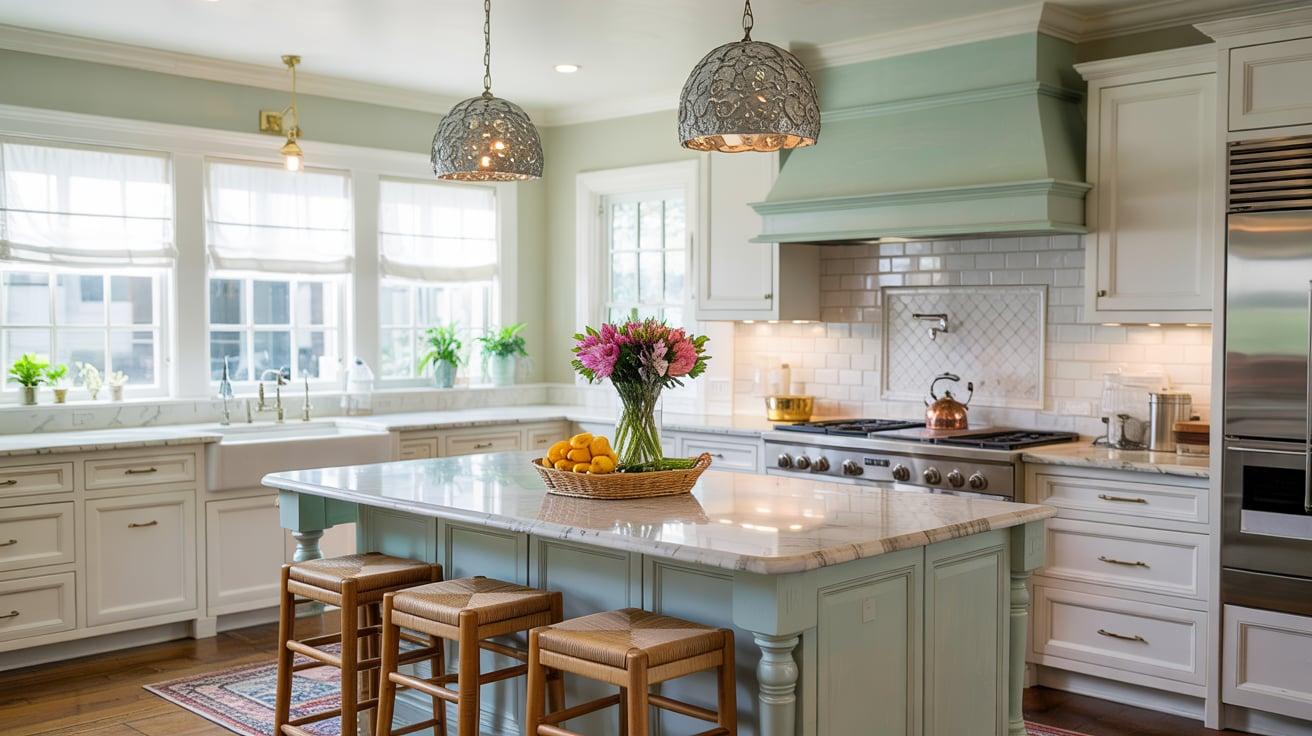
The kitchen is eased edge territory at its finest. When you’re rushing around with hot pans or sharp knives, the last thing you need is a countertop edge that could leave a mark if you bump against it.
I’ve found that eased edges work especially well in galley kitchens or spaces with islands where people naturally lean while chatting or helping with meal prep. Plus, these edges don’t trap food particles or spills like more ornate profiles do.
2. Bathrooms
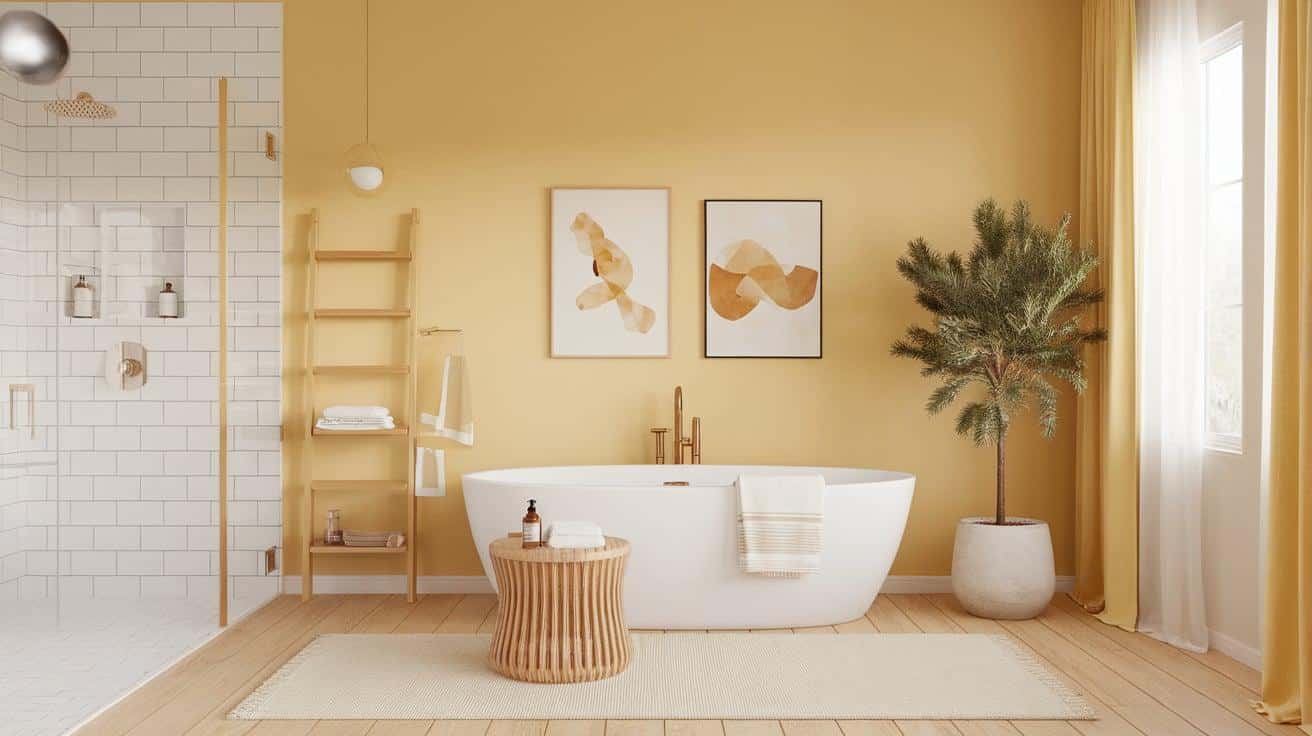
Bathroom counters with eased edges create that spa-like, clean feeling without trying too hard. I particularly love how they complement vessel sinks by providing a simple foundation that lets the basin be the star.
In smaller bathrooms, the unfussy line of an eased edge helps maintain visual spaciousness rather than adding another decorative element to a tight space.
3. Laundry Rooms
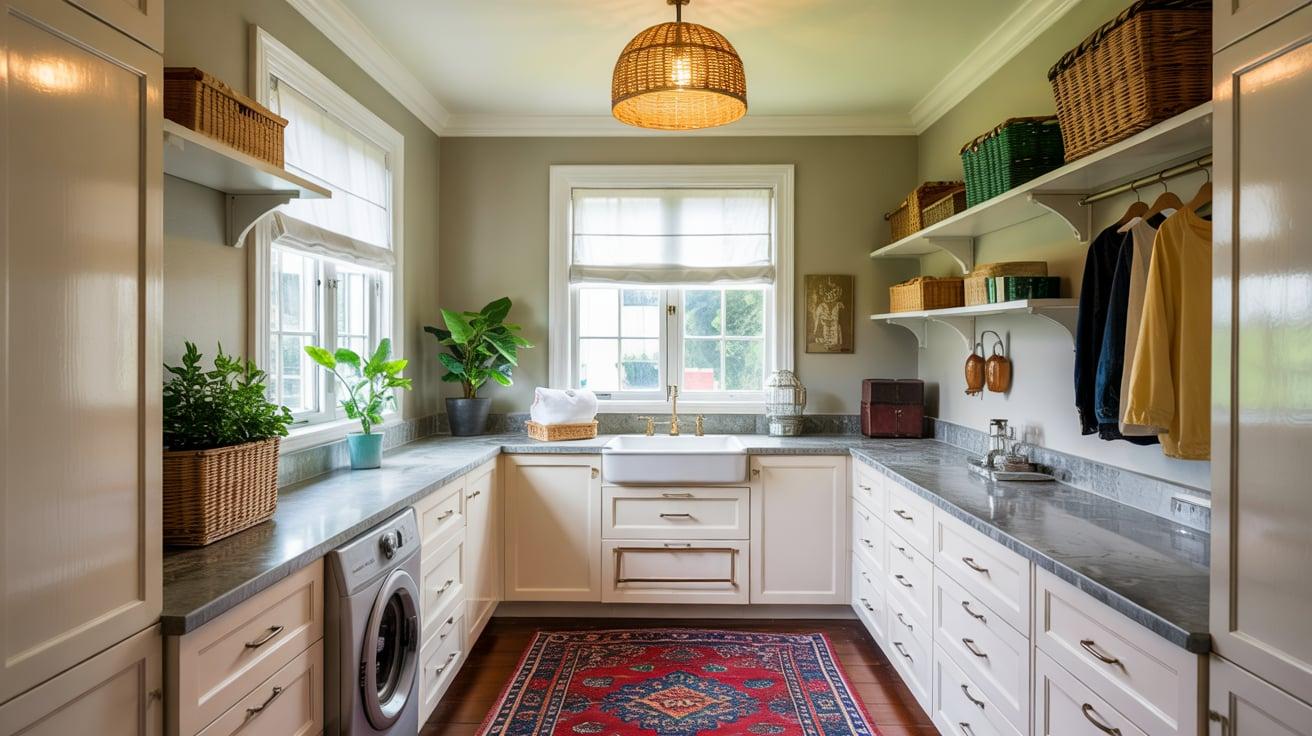
Let’s be honest – nobody wants to spend extra time cleaning their laundry room. Eased edges in this hardworking space mean fewer nooks for lint and detergent residue to hide.
When you’re moving piles of clothes or heavy detergent containers across the surface, these edges won’t snag fabrics or catch on your sleeves.
4. Home Offices
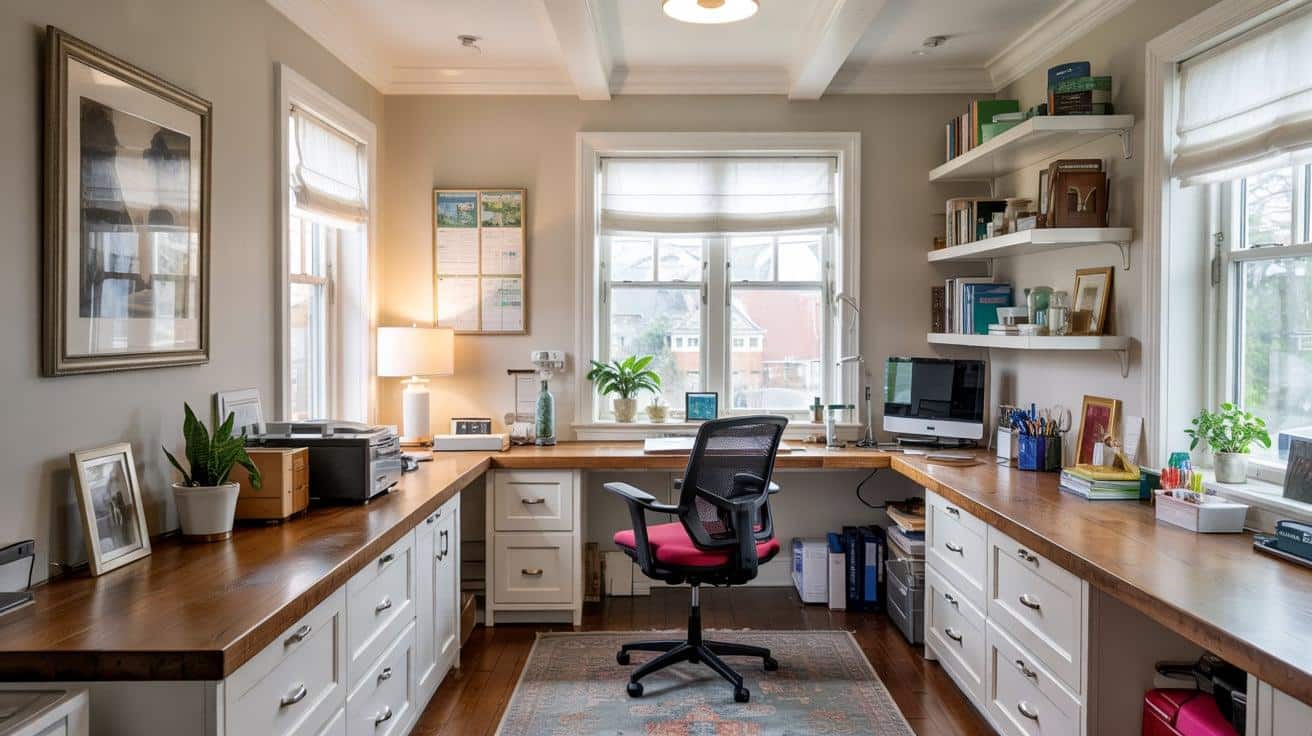
For desks and workspaces, the gentle profile of an eased edge provides comfort where your wrists and forearms rest during long hours of typing or writing. I’ve noticed the clean, professional look also helps maintain focus by avoiding unnecessary visual distraction.
Advantages of Eased Edges
These practical benefits make eased edges the smart choice for homeowners who value function as much as form.
| Advantage | Description |
|---|---|
| Safety | Reduces painful bumps and injuries from sharp edges, particularly beneficial for homes with kids or elderly family members. |
| Durability | Eased edges are more resistant to chipping and damage, ensuring your countertop stays in pristine condition longer. |
| Aesthetic Versatility | Their clean, subtle lines complement various design styles, making them versatile and adaptable to any aesthetic. |
| Ease of Maintenance | Eased edges eliminate grooves where dust and crumbs can accumulate, making them easier to clean and maintain. |
| Cost-Effectiveness | Basic eased edges are cost-effective compared to more elaborate profiles, saving money for other parts of your kitchen. |
| Timelessness | The simple design of eased edges ensures they never go out of style, remaining timeless across design trends. |
| Water Control | The slight rounding helps direct spills back onto the countertop, protecting cabinets and preventing liquid damage. |
Disadvantages of Eased Edges
Eased edges offer simplicity and safety but may lack the boldness and visual interest of more intricate designs. They can show wear more quickly, may not be compatible with all materials, and might not stand out in highly customized kitchens.
| Disadvantage | Description |
|---|---|
| Subtle Appearance | Eased edges are understated and can seem plain compared to more decorative options like waterfall or ogee edges, potentially lacking ‘wow factor’. |
| Potential for Wear | The rounded portion of eased edges may show wear faster than the flat surfaces, especially in high-traffic areas, and might develop a different sheen over time. |
| Compatibility | Some materials, especially brittle stones or very hard materials, may not achieve the desired smooth transition and may chip during the easing process. |
| Less Distinctive | Eased edges offer limited opportunity for customization, making your kitchen look similar to others without a personal touch. |
| Limited Light Play | More elaborate edge profiles create interesting shadows and light play, which eased edges lack, leading to a less dynamic visual effect in dramatic lighting. |
| Perception of Value | Some buyers may perceive eased edges as a budget option, affecting resale value in markets where more ornate edges are associated with higher quality. |
| Transition Challenges | In multi-level designs or material transitions, eased edges can create less distinct visual separation between surfaces, making transitions less deliberate. |
Wrapping It Up
Eased edge countertops offer that perfect balance of form and function that so many homeowners are looking for. The subtle rounding creates a safer, more comfortable experience without sacrificing that clean, modern look that works in any room.
Whether you choose a full eased, micro eased, or any variation in between, you’re getting a practical surface that stands up to daily life while remaining timeless in its appeal.
I’ve seen firsthand how these understated edges can make a kitchen feel both more welcoming and more functional no more painful hip bumps or snagged clothing!
Ready to update your kitchen or bathroom? Consider the humble eased edge for your next countertop. Your arms, hips, and cleaning routine will thank you. Have questions about which eased edge might work best for your home?

